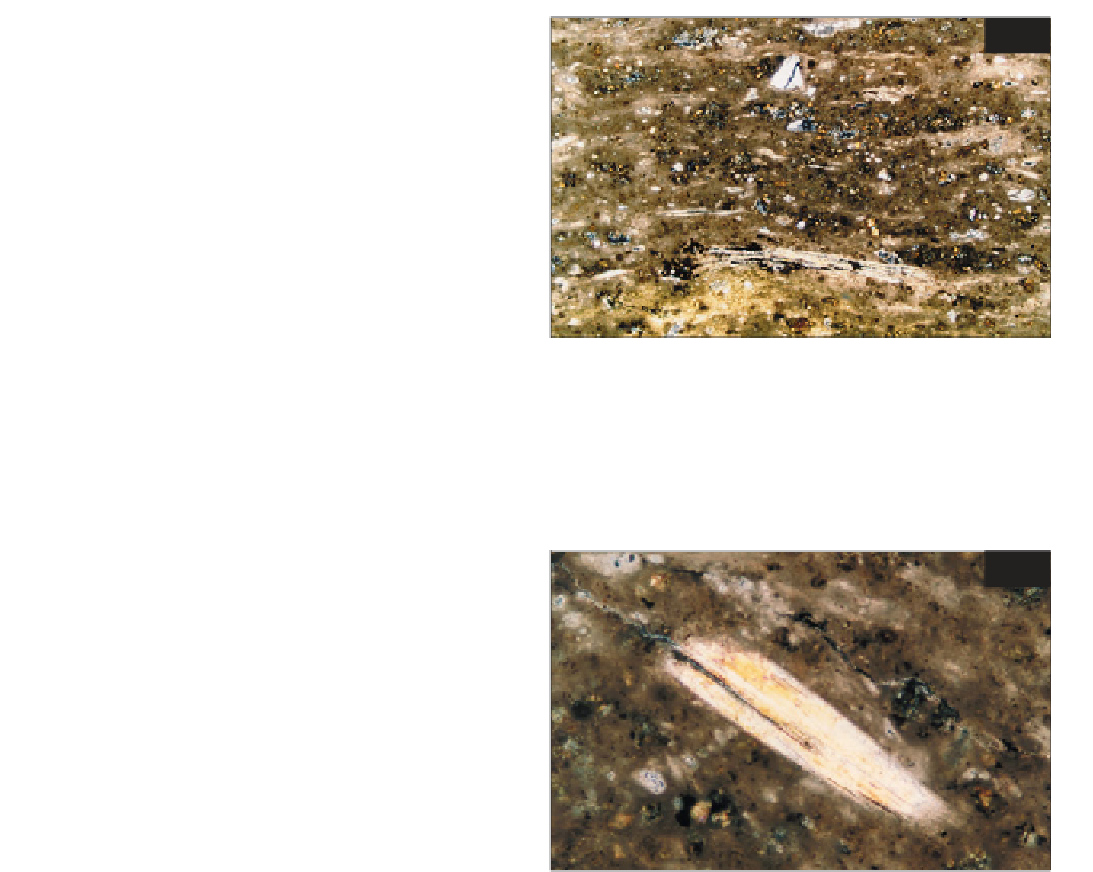Geoscience Reference
In-Depth Information
252
or high pressure steam at 170°C. Up to 40% of the cement
may be replaced by silica flour, if high pressure steam is
to be used for curing. Curing is sometimes achieved at
ambient temperature or by autoclaving.
In thin section, asbestos cement typically consists of
finely divided asbestos fibre dispersed in a matrix of
Portland cement, including abundant partially hydrated
relict cement grains. Asbestos cement is usually
manufactured using chrysotile (white asbestos), although
crocidolite (blue asbestos) and amosite (brown asbestos)
are used for some products. The asbestos fibres and fibre
bundles usually exhibit a preferred orientation
subparallel to the length of the sheet, tile, or pipe that
they are incorporated within. Traces of the asbestos host
rock such as serpentinite, olivine, or pyroxene may also
be present. If silica flour was included, remnants may be
visible in the cement matrix. Asbestos cement products
would be expected to appear uncarbonated when new
and over time the cement matrix will carbonate. Figures
252
and
253
show the appearance of a fully carbonated,
flat asbestos cement sheet in thin section.
Although asbestos cement products are usually very
durable in service, the petrographer may be called upon
to investigate a number of issues. The most common are
confirming that hazardous asbestos is present and
determining the composition and manufacturing process
of the products. Deterioration issues that can be studied
include carbonation leading to embrittlement (and
associated loss of strength) and attack by aggressive
water on pipes, due to soft water or sulfates.
Owing to the hazardous nature of asbestos, all
sampling and handing of products suspected to contain
asbestos should be performed using appropriate safe
working procedures (Health and Safety Executive, 2005).
Also, the petrographer should be aware of any legal
obligations regarding asbestos. For example, in the
United Kingdom the Control of Asbestos at Work
Regulations apply to all work activities involving
asbestos-containing materials.
252
General view of asbestos cement sheet consisting
mainly of carbonated Portland cement (brown) with
abundant unhydrated/partially hydrated cement grains
and asbestos fibres (bright, elongated); XPT, ×35.
253
253
Close view of a chrysotile (white asbestos) fibre
bundle within asbestos cement sheet. The chrysotile
exhibits first-order yellow interference colours. The
fibre is surrounded by carbonated Portland cement
(brown) that incorporates unhydrated/partially
hydrated cement grains; XPT, ×150.



